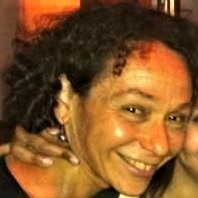Jill F. Strauss

Associate Professor
Speech, Communications and Theatre Arts
EMAIL: jstrauss@bmcc.cuny.edu
Office: S-628P
Office Hours: Please email to confirm schedule
Phone: +1 (212) 776-6370
Jill Strauss, PhD, teaches Conflict Resolution and Communications in the Speech, Communications and Theater Arts Department at Borough of Manhattan Community College (CUNY). Her research involves Restorative Practices and the visual interpretation of narrative and difficult histories. She incorporates virtual reality technology in her curriculum so that students can make visible hidden histories by creating monuments in augmented reality. This project has grown into a collaboration with Mt. Sinai Hospital in New York City. Jill completed her PhD at Ulster University in Northern Ireland in 2010, where she designed an innovative fieldwork project integrating storytelling and visual art for empathy and validation as one way to address a history of mutual humiliation and historical conflict. Jill is co-editor of Slavery’s Descendants: Shared Legacies of Race and Reconciliation (Rutgers University Press 2019) along with other articles and book chapters.
Expertise
Peace Education and Conflict Resolution
Degrees
Ph.D. 2010
Ulster University, Northern Ireland
Dissertation title – “Communities of Interest: A Cross Community Intergenerational Storytelling, Conflict Resolution, and Visual Art Project with Exhibition”
M.Ed. 2002
Teachers College Columbia University
Department of International and Transcultural Studies
Specialization in Peace Education and Conflict Resolution
Thesis title- Peace Education Curriculum in Response to September 11, 2001
M.A. 1993
Hunter College, City University of New York
Teaching English to Speakers of Other Languages (TESOL)
B.A. 1987
Purchase College, State University of New York
Courses Taught
- The emphasis of this course is on developing communication behaviors that productively manage conflict; it is structured to integrate communication theory with practical application. Through readings, lectures, sample conflict cases, and interviews, as well as through in-class discussion and exercises,this course will address both intra-personaland inter-personal conflicts that occur indiverse settings, examine the sources of these conflicts, and analyze the factors that influence how we identify, define, manage, and defuse these conflicts. Prerequisite: SPE 100 or SPE 102
- This course is designed to provide an understanding of intercultural principles and perspectives when communicating with people from diverse cultures. Consideration will be given to both verbal and nonverbal communication processes in the "American" culture, co-cultures, contact cultures, and popular culture. Through readings, lectures, response papers, and interviews, as well as through in-class discussion and exercises, this course will explore how culture shapes communication, how situations are framed through cultural lenses, and how histories, perceptions, values, contexts, aspects of stereotypes, and ethnocentrism all contribute to the complexity of intercultural communication. Prerequisite: SPE 100 or SPE 102
- This course is recommended for those whose native language is not English. It addresses fundamentals of speech communication, as does SPE 100, but provides special emphasis in vocabulary building, pronunciation, and enunciation. Classwork is implemented through the use of recordings, individual and group drills, interpersonal exercises, oral readings, and impromptu and prepared group discussions and speeches. Weekly speech tutoring is required. This course satisfies the equivalent for, and may be taken instead of, SPE 100. Credit is given for SPE 102 or SPE 100, but not for both classes.
Research and Projects
In New York City in April 2018, after ten years of controversy and activism, the statue of J. Marion Sims (called by some ‘the father of gynecology’ for his experiments on enslaved and immigrant women in the 19th century) was removed but the pedestal remains in situ. In the two years before the monument is replaced, university students created augmented reality images on the Sims pedestal to ‘bring to life’ their interpretations that are not (yet) part of the prevailing history, for validation and empathy. Augmented Reality (AR) is a process using computer-generated images that appear to be in 3D to visually enhance objects in the real world. AR allows for multiple perspectives that can be viewed on most cell phones. The resulting juxtaposed images on the pedestal create yet another platform for dialogue on difficult histories making relevant connections to present injustices.
Publications
“Contested Site or Reclaimed Space: Spatial Imaginaries and Re-Membering but Not Honoring the Past on the Empty Pedestal.” Museums, Memorials and Memoralization: Public Policies of Memory between Past and Power special issue of History and Memory, vol. 32, no. 1, 2020. (Accepted with revisions).
“Student Led Research and Biopics as an Interdisciplinary Teaching Tool for Conflict Analysis in the Urban Community College Classroom.” Difficult Discussions: Issues and Ideas for Engaging College Students in Peace and Justice Topics, edited by Laura Finely, Information Age Publishing, 2020.
Alison Atkinson-Phillips, Ulrike Capdepón, and Oriol Lopez Badell. March/August 2019. “Mapping Historical Dialogue: Remembering for the Future.” Mapping Historical Dialogue special issue of Kritika Kultura 33: 1-20. http://journals.ateneo.edu/ojs/kk/.
Dionne Ford, editors. Slavery’s Descendants: Shared Legacies of Race and Reconciliation. Rutgers University Press, 2019.
“Shared Legacies: Narratives of Race and Reconciliation by Descendants of Enslavers and the Enslaved.” Listening to the Movement: Essays on New Growth in Restorative Justice, edited by Ted Lewis and Carl Stauffer, Wipf & Stock Publishers, 2019, http://zehr-institute.org/ publications/listening-to-the-movement/.
Michelle Black. “We Say, When We’ve Reached One We’ve Reached the World…But What If We Missed One?” In Factis Pax Special Issue on Peace Building in Post-Conflict Contexts, vol. Volume 11, no. 2, 2017, pp. 121-132, http://www.infactispax.org.
“The Art of Acknowledgement: Re-Imagining Relationships in Northern Ireland ” Reparation for Victims of Crimes against Humanity: The Healing Role of Reparation, edited by Jo-Anne M. Wemmers, Routledge, 2014.
“Rewards and Challenges of Exhibiting Peace at the Canadian War Museum.” Peace and Conflict: Journal of Peace Psychology, vol. 19, no. 4, 2013, pp. 399-407.
Honors, Awards and Affiliations
- 2019 National Endowment for the Humanities Summer Institute, Museums: Humanities in the Public Sphere
- 2018 National Endowment for the Humanities Summer Institute, Visual Culture of the American Civil War and Its Aftermath
- 2012-2013 Fulbright Research Chair in North American Society and Culture at Concordia University, Montreal.

